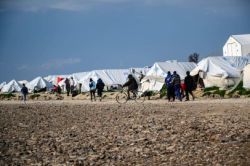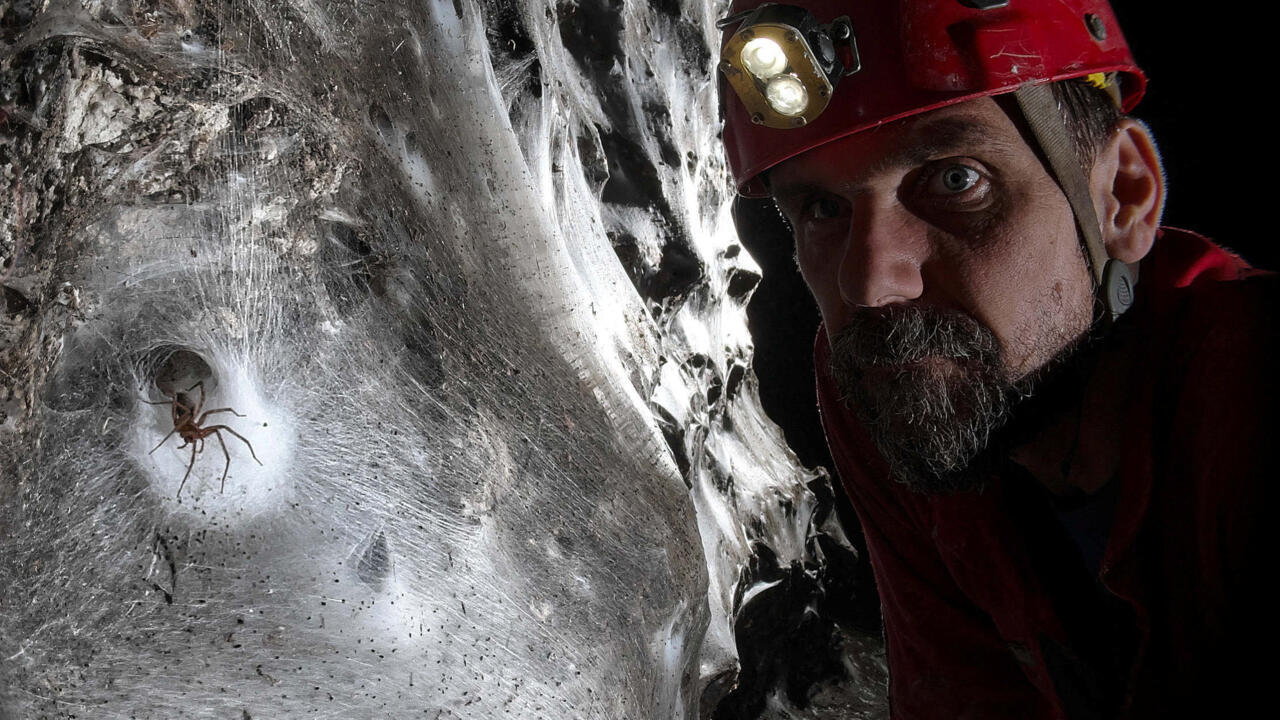Housing unaccompanied minors in Italy: ‘We need to structure the system ar
Source: InfoMigrants: reliable and verified news for migrants – InfoMigrants
At a cooperative running community housing for unaccompanied migrant minors in Trieste and Monfalcone, staff and residents speak about their experiences within the Italian system, and their hopes that these young migrants might eventually become a resource for Italian society in the future.
“My name is Youssef and I am 17 years old.” Youssef arrived from Egypt, via the Balkan route at the beginning of January 2025, he tells InfoMigrants. “I flew from Egypt to the UAE, and then on to Turkey. Then I went to Greece by boat, then Albania, Bosnia, Croatia, Slovenia and then Italy,” explains Youssef in Italian.
When Youssef set off, he was just 16. He says he traveled with a friend. “I came here to work and to help my family.” Youssef says he had been working with cars in Egypt for several years, and he would like to do a similar thing in Italy. But time for him is running out. In December this year, he will turn 18, and then he will no longer qualify for a place in the community at Monfalcone.
Youssef seems unsure about what comes next, but says he is already looking for an apartment to rent and a job. He says that since he has now learned Italian, with the help of courses run by the Duemilauno Cooperative, which operates the community where he lives, he wants to stay in Italy and get to work as soon as he can.
According to Italian government data, Youssef is one of around 16,500 unaccompanied migrant minors in Italy. On June 30, 2025, Italy had registered 16,497 foreign minors (under 18). The majority of those minors are male (87.5 percent) and are mostly 16 or 17 when they arrive. Those between seven and 14 years of age account for just 15.1 percent of arrivals.
The majority of unaccompanied migrant minors come from Egypt, like Youssef (24.6 percent). This is followed by minors from Ukraine (19.5 percent), Gambia (9.5 percent), Tunisia (7.9 percent) and Guinea (6.2 percent). Sicily hosts the greatest number of migrant minors, followed by Lombardy, Campania (the region around Naples) and lastly Emilia Romagna, also in the north, and the region around the regional capital Bologna.
Regional data from the end of April 2025 suggested that there were around 700 unaccompanied migrant minors in the region surrounding Trieste and Monfalcone, namely Friuli Venezia Giulia.
‘We created the first community house in Monfalcone in 2016’
Sergio Serra is a director at the cooperative. He’s been working in social care for over 40 years, he explains, but working with migrants for about ten. “We created our first community house here in Monfalcone in 2016,” says Serra.
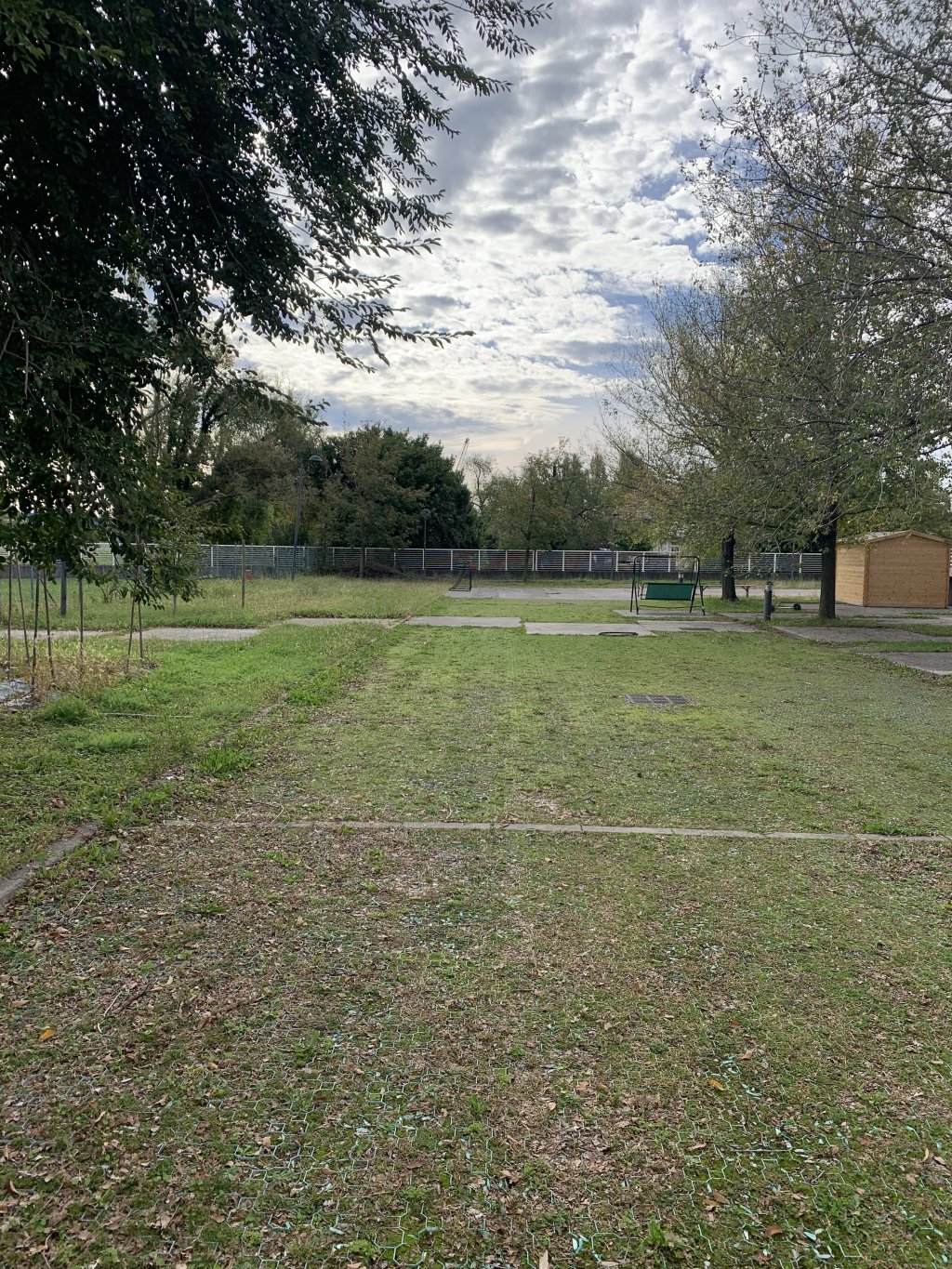
During the pandemic, the need for more structures to house unaccompanied minors, who might otherwise have been on the street, became greater, and the cooperative began to expand its services, acquiring more structures in Trieste.
This included building a first reception center for those arriving via the Balkan route in Trieste, explains Serra. In conjunction with Trieste and Monfalcone’s municipal authorities, the Duemilauno Cooperative first reception structure in Trieste allows for people to stay for just a month usually, before being sent to a more permanent center, where they can follow courses, learn Italian and attend school or training.
On its website, the Italian government acknowledges that all unaccompanied foreign minors, however they entered Italy (ie by regular or irregular routes) have the right to accommodation, normally provided via local municipalities who work in conjunction with associations, cooperatives and charities like Duemilauno.
Foreign minors are then enrolled in school by these associations or offered training courses, if older than 16. They are appointed a social worker / tutor who helps represent them and navigate the system. They are also offered access to basic and emergency services within the Italian public health care system. They are then issued with a stay permit which covers their stay in Italy until they turn 18, when it needs to be renewed or converted depending on their circumstances. The type of stay permit can vary depending on whether they are also seeking asylum, but as minors, they have the right to stay on the territory and be cared for in structures specifically designed for them.
‘People arrive in continuation, there is a high degree of changeover’
“People arrive in continuation; there is a high degree of changeover,” says Serra. At the first reception center in Trieste, there are 67 places. Some of those places offer accommodation to those arriving who are just about to turn 18. “They tend not to be moved to other places, and will just stay here,” says Serra.
In the first reception center, residents are offered health checks and help with the first practical and bureaucratic steps linked to registering their presence in Italy. Trips to the Questura — the police headquarters — where they need to go to apply for stay permits, and help applying for asylum if they qualify.
The majority of those arriving in the last few years, says Serra, come from Egypt. The centers the cooperative runs also have residents from Kosovo, Bangladesh, Pakistan and Afghanistan.
“It used to be a huge majority of Afghans, but that has changed. Now we have more of a mix. Now we also have kids from Tunisia, Morocco, Algeria, Egypt, Kurds, Turks and Syrians.”
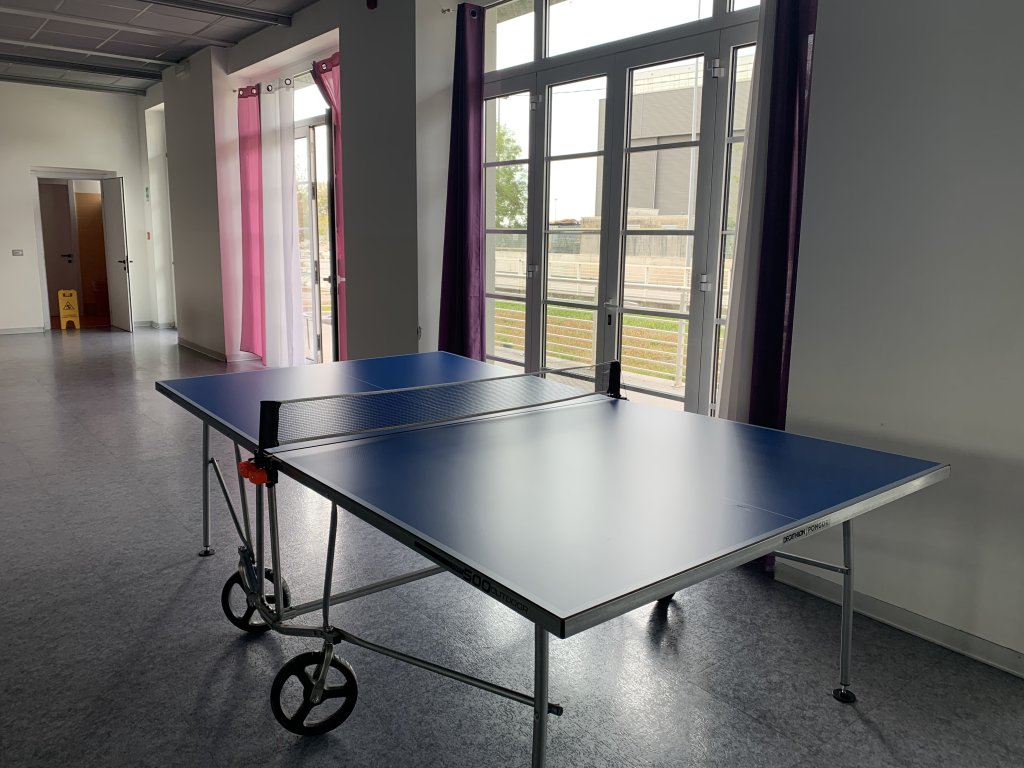
“In the last two years, the young people who arrive here tend to be a bit ‘older’ than they used to be when they first arrived. Especially those from Kosovo. This is a problem, as we don’t manage to be able to offer much help or get them trained or integrated, because we don’t have time, [before they turn 18 and are obliged to leave the welfare system provided to minors],” explains Serra.
“When migration is intense here, lots of young people might stay here a day or two and then would escape. Now, things have calmed down quite a lot, so most young people tend to want to stay with us for longer.”
Longer can mean several years, like in the case of Alessio, from Albania. But those who stay that long, thinks Serra, only represent about 30 percent of cases.
Alessio’s tale
Alessio arrived from Albania when he was just 14, he says smilingly, drawing on a cigarette on the balcony of the home in Trieste. His Italian is now fluent. “I learned Italian within about two months,” he grins.

“At the beginning I didn’t know anything, I didn’t understand the system. I turned up at the home for unaccompanied minors and they told me, you have to stay here for four years, until you become an adult. I hadn’t expected that. I just wanted to go to work. The day before leaving for Italy, I had been working in Albania.”
In fact, although Alessio picked up Italian quickly, his school career did not go especially well in Albania. “I wasn’t doing well in school,” he says, slightly sheepishly, “and I started work when I was quite young, so I thought I should leave for Italy in search of a better life.”
At first, Alessio was dismissive of the idea of sitting down to learn Italian and take part in school courses via the community. “I was just speechless, as that was not part of my plan. But then I realized, if you can’t speak the language, you can’t get far anyway. Once you can speak Italian, there are a lot more opportunities available.
So, I persevered. I completed three Italian courses and I trained to be a plumber. However, I was kind of too young, and I did a few stupid things — not really bad, but I stopped doing that. And then I trained to be a Pizzaiolo (a pizza maker) and I am working as that now.”
‘Working as a pizzaiolo’
Alessio lights up when he talks about his new job. “Working as a pizzaiolo was better for me, I enjoy it more. It is nice working near the ovens. Now I have been working for a year, and I feel good. I feel like I am part of the family here. There are quite a few Neapolitans working there,” he grins.
“I think it is possible to live a good life here if you are willing to work. But if you don’t make an effort, you will remain on the streets. When I first arrived, I did think about turning around and going back home. I didn’t want to stay here. But after just a few months, I no longer wanted to go back to Albania.”
In fact, Alessio hasn’t been back to Albania since he arrived. But now that he has his documents, he says he is planning a trip in December this year. “That will be a big trip, emotional,” he says.
In the community house in Trieste, there is space for 19 young people, explains Serra, “but there are currently 15 here.”
At the center in Monfalcone, where Youssef has been staying, “we try and keep the numbers to about 24. Of course there is space for a lot more,” says Serra, showing InfoMigrants around the big building, which began life in the 1950s as a factory for the plastics firm Italplast.
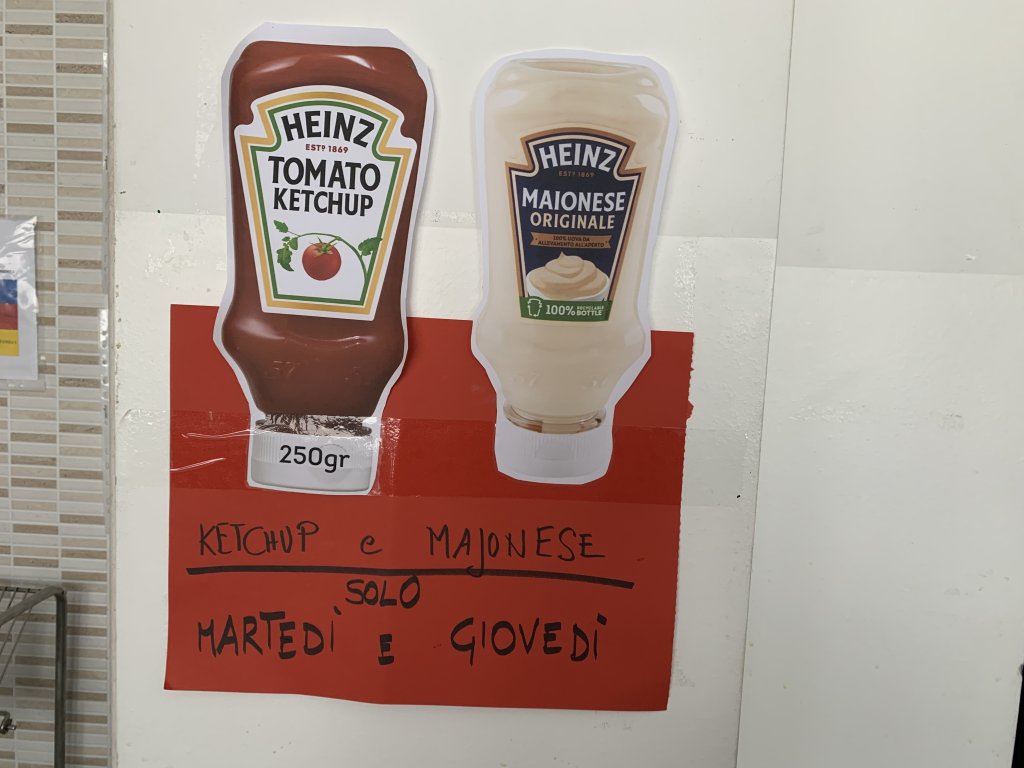
Individualized programs
The cooperative took over the rent of the building in Monfalcone in 2016. It had already been converted from a factory into a hotel by a public consortium that manages the industrial area in Monfalcone. It was originally intended to house company executives and provide a canteen for workers in the neighborhood, but it turned out there wasn’t much demand, and after a few years left empty, the public authorities put the building up for rent.
Keeping the numbers down is important to Duemilauno Cooperative’s philosophy of offering individualized programs for its young residents, says Serra. “We try and keep the groups small, so there is a greater number of operatives for each small group of young people.”
There are single and double rooms available. The single rooms tend to go to the older inhabitants, who are already working or finishing school. When it is possible, Serra says, the cooperative tries to accommodate friends or conationals together, if that is what they want. “There is a bathroom for each bedroom, which already helps to cut down on the source of possible friction,” points out Serra.
When InfoMigrants visits, the building is fairly empty. “Most of the residents are at school,” explains Serra, “or doing training courses. Some of them get up at 6 am to go to school in Trieste, others attend the vocational school just a few hundred meters from here [ENFAP] that teaches carpentry and welding, skills that are useful for finding jobs at the shipyards,” that dominate Monfalcone’s economy.
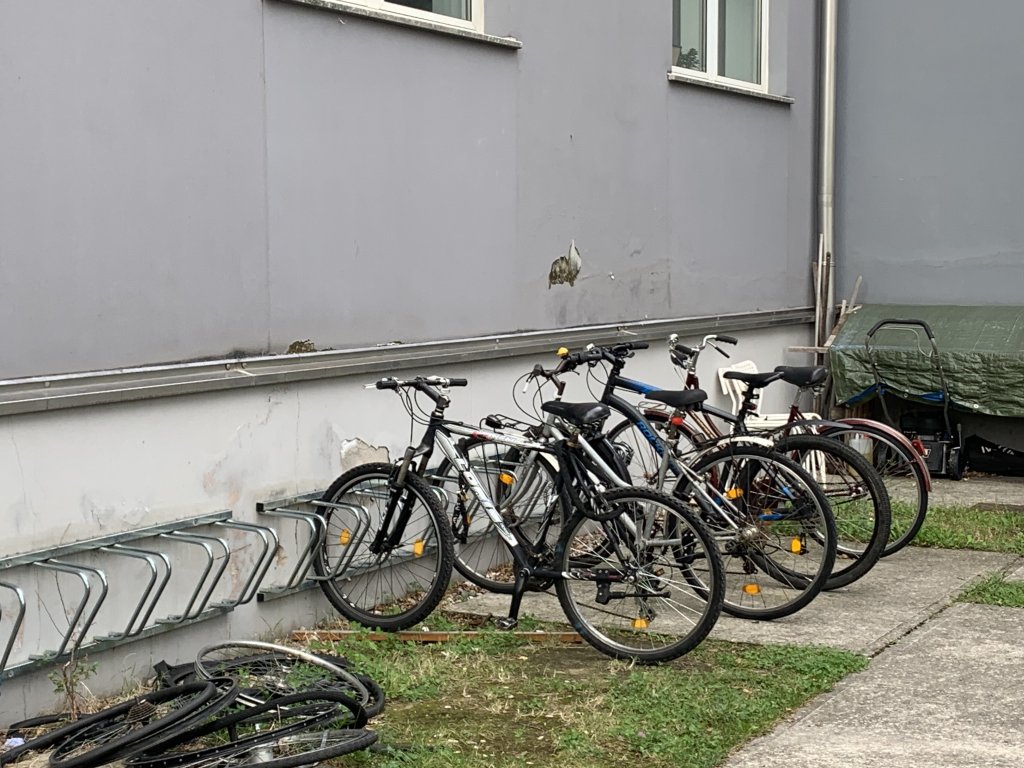
“Several of our former residents have gone on to work in Fincantieri [the public company running the shipyards]. But others get jobs with smaller firms, maybe installing heating or refrigeration. Sometimes the smaller firms can offer better conditions.”
Migration should not be seen as a problem, thinks Serra
Serra thinks that those who work with migrants in Italy are still learning best practice. Since, the really targeted structures began to be set up a decade ago. “We are getting better all the time,” says Serra. “New energies are coming in.” Unfortunately though, he sees that across Europe, with the increases in arrivals, there has been a certain rigidity that has set in to the system.
Controls and restrictive policies normally end up limiting the resources that cooperatives like his can offer, which in turn has a knock-on effect on the possibilities of integration for the migrants arriving.
In Serra’s opinion, “we need to structure the system around seeing migration as a resource, instead of treating it as a problem.” Especially in a country like Italy, and in the north-east, part of the country’s industrial backbone, adds Serra.
He points out that a recent study he read ranked Italy second, only to Japan, in having the world’s most ageing population, out of nearly 200 countries.
“That means that the arrival of young people could be great demographically, for our economy, and for the future. But you need to recognize that and to manage it. If you want to make people believe that they are not a resource for us but are something that will make things worse, that will cause disorder and criminality and social problems, then the system will just get more and more rigid. We [at the cooperative] believe in the first version, but it remains to be seen if the politicians can see it that way.”
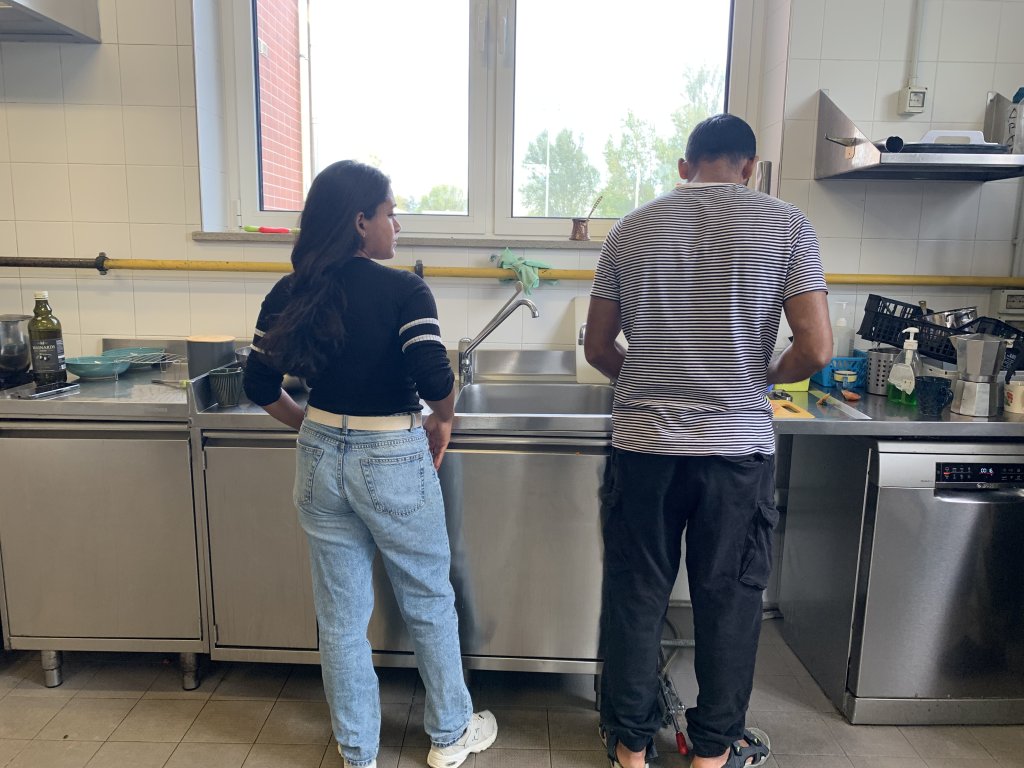
A dwindling population
Serra thinks that if migrants are not seen as a resource, then the Italian population “risks dying out. Welcoming migrants is the only option at the moment, unless we start having more children and begin to believe in the future. The average age in Italy is 47.5, in countries in Africa, it tends to be around 20. I don’t know what more I can say to convince politicians. But that is not to say that we should welcome everyone indiscriminately, or to create chaos. It means to organize things properly and structure them around the idea that successful integration could mean that migrants can provide that resource that Italy needs.”
As a parting shot, Serra points out that there “are around 300,000 young Italians, mostly with degrees, who leave the country every year to work and study in northern Europe, the US, the UK and Australia. That coupled with a declining birthrate,” says Serra, shrugging his shoulders and circling back to his point about migrants as a resource.
In his experience, many of the young people who go through the structures Serra and his team run are “highly motivated to apply themselves and to cover the gaps in their education in very short stretches of time. Young Italians can be much more lazy and demotivated than these young people,” says Serra.
The original article: belongs to InfoMigrants: reliable and verified news for migrants – InfoMigrants .


